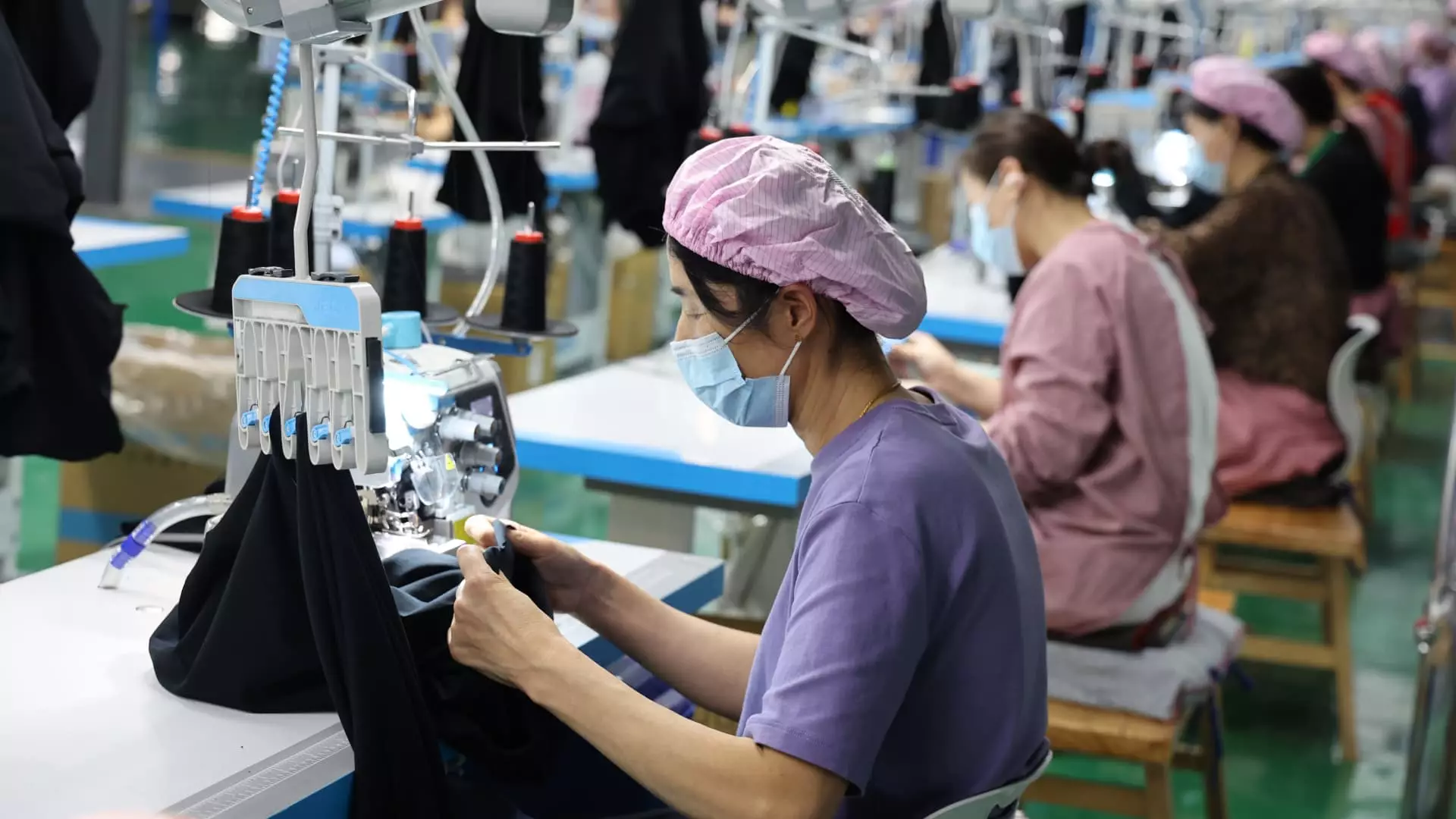The recent surge in U.S. tariffs against Chinese goods has triggered alarming production stoppages across various manufacturing sectors in China. Reports indicate that a myriad of factories is opting to suspend operations while searching for new markets. As Cameron Johnson, a senior partner at Tidalwave Solutions, indicates, this is not merely a trickle; it is a troubling signal of a brewing crisis. Hundreds of thousands of factory workers are now on uncertain furloughs, exacerbating concerns about the broader job market. The gravity of the situation cannot be understated—especially as critical industries like toy manufacturing and sporting goods feel the pinch the hardest. Relying solely on exports to the U.S. has proven increasingly risky, and while some firms are biding their time in hopes of a trade truce, the existential threat posed by these tariffs is palpable.
The Ripple Effect on Employment
Current estimates suggest that between 10 million to 20 million workers in China are directly associated with export activities tied to the U.S. market. Such a vast number infers a real threat to the livelihoods of countless families. The Chinese labor force reported last year was approximately 473.45 million, showing that an entire sector is vulnerable to the whims of U.S. trade policy. To envision workers abruptly sent home, relying on governmental aid in a country already navigating its own socio-economic challenges is a harrowing thought. The trade wars have not just disrupted economics—they have disrupted lives.
Adaptation Amidst Adversity: How Companies are Pivoting
Faced with a looming imbalance of orders and mounting pressure from cancelled contracts, manufacturers are being forced to innovate and explore alternative sales avenues. Take, for instance, Woodswool, an athletic apparel producer who pivoted to online sales through cutting-edge technology like livestreaming—a strategy that relies heavily on social media’s power in a market of over 1 billion consumers. While this innovative approach might represent a “knee-jerk” reaction to an unprecedented crisis, it could signify a long-term shift in how businesses connect with customers.
However, it raises a critical question: Can these domestic sales genuinely replace the substantial losses incurred from diminished U.S. orders? Many analysts argue that the short-lived success of platforms like Baidu’s livestreaming feature is inadequate. The broader implications reveal an unsettling truth: manufacturers have been forced to replace well-established international markets with untested domestic ones, their growth becomes overshadowed by the daunting reality of increasing competition at home.
The Uneven Playing Field of Fiscal Aid
The Chinese government’s response to the crisis is telling: offering subsidies to bolster domestic sales channels while promoting innovations such as AI-assisted sales. Here lies an undeniable truth—while these moves appear proactive, they are band-aid solutions. Transitioning to e-commerce requires not just financial support but also an underlying cultural adaptation—investing in new marketing strategies, understanding consumer preferences, and, most importantly, differentiating from what was once a lucrative export focus. But even with financial backing, the question remains: is this a sustainable long-term strategy, or merely a temporary reprieve from an economic storm?
Expansion of Trade Horizons: New Opportunities or False Hope?
Despite the woes plaguing the U.S.-China trading relationship, some companies are courageously exploring new frontiers beyond American markets. Ventures like Liu Xu’s e-commerce operation, which targets Brazil, exemplify a shift in strategy that could provide fertile ground for growth. However, notable challenges persist—currency fluctuations, escalating shipping costs, and supply chain discrepancies threaten profitability. In different corners of the globe, such as Ghana, the entrepreneurial spirit shines bright, creating avenues to circumnavigate the substantial barriers imposed by U.S. tariffs. These businesses could either flourish against the odds or face new pitfalls entirely.
The Broader Implications of Tariff Policies
The harsh truth about tariffs is that they strain the very fabric of global trade and exacerbate existing inequalities. The U.S. might hope to safeguard its economy by pushing for higher tariffs, but in doing so, it risks engendering greater reliance on competitive markets in emerging countries. While on paper these tariffs seem to protect American interests, they also inadvertently foster a volatile situation where established markets face crippling losses, potentially paving the way for new economic powerhouses to emerge. The U.S.-China trade confrontation is not just a local skirmish—its reverberations will be felt globally. As companies scramble for alternatives and home-grown markets are explored, the adverse effects on employment, political dynamics, and economic structures will remain.
This trade war, fueled by fear and relentless ambition, reveals an unsettling landscape where millions of jobs hang in the balance and companies tread carefully on uncertain paths. Just when companies find a way to adapt, they are forced to confront questions of sustainability and future viability. The stakes are high, and the consequences are profound, laying bare the complex interdependencies of modern commerce.

